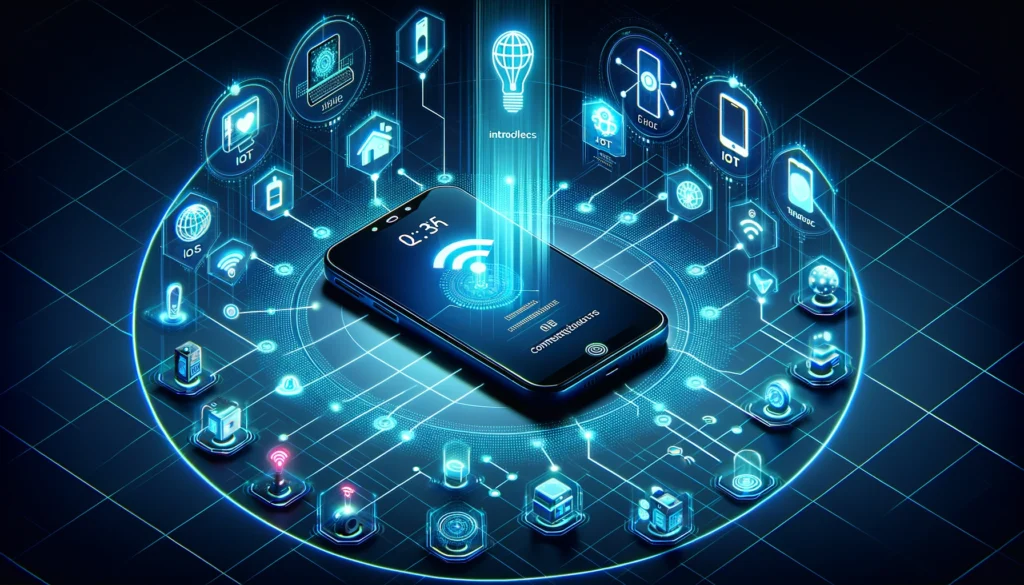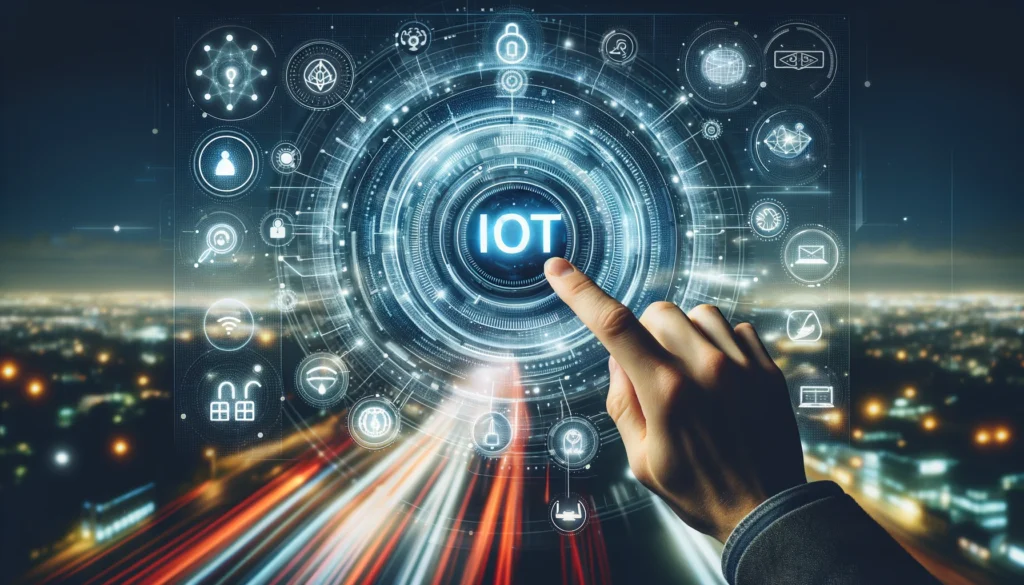IoT in Healthcare
In the dynamic world of health informatics, the Internet of Things (IoT) emerges as a game-changer. At its core, IoT in healthcare refers to the interconnected network of medical devices and applications that communicate and exchange data. This technology leap has reshaped healthcare, transitioning from traditional methods to advanced, tech-driven solutions.
Imagine a world where your heart monitor, insulin pump, and even your fitness tracker speak the same digital language. This isn’t science fiction; it’s the reality of modern healthcare. IoT’s integration into this field has been nothing short of transformative. For instance, consider smart inhalers that track usage and environmental factors for asthma patients, or wearable biosensors that monitor vital signs in real-time. These aren’t just gadgets; they are lifelines for patients and treasure troves of data for healthcare providers.
This integration offers a more holistic view of patient health, enabling personalized care like never before. By harnessing the power of data and connectivity, IoT bridges the gap between patient and provider, ensuring timely interventions and informed decision-making. The impact is palpable – improved patient outcomes, enhanced care delivery, and a significant leap towards proactive health management.

Revolutionizing Patient Monitoring and Care
IoT devices are rewriting the narrative of patient monitoring and care. From wearables to home monitoring systems, these technologies have unlocked new dimensions in healthcare. By facilitating continuous, real-time health data tracking, IoT devices empower patients and providers alike with invaluable insights.
Wearable technology, for instance, has moved beyond just tracking steps and heart rates. Today, they monitor sleep patterns, oxygen levels, and even electrocardiogram data. Picture a heart rate monitor that alerts patients and doctors to irregularities in real-time, enabling swift medical response. Similarly, home monitoring systems have evolved to become critical in managing chronic conditions. Devices that measure blood glucose levels or blood pressure remotely transmit data to healthcare providers, allowing for timely adjustments in treatment plans.
These advancements in patient monitoring lead to a more proactive approach to healthcare. Patients are no longer passive recipients of care; they are active participants, equipped with tools that provide a continuous stream of health data. This shift not only enhances the quality of care but also fosters a sense of empowerment among patients.
Furthermore, these technologies are breaking barriers in healthcare access. Remote patient monitoring systems, for example, enable care delivery in rural or underserved areas, where traditional healthcare services might be limited. This not only improves outcomes for individual patients but also has the potential to reduce systemic healthcare disparities.
The Role of Connected Medical Devices in Diagnosis and Treatment
Smart, connected devices are now pivotal in both diagnosis and treatment, redefining patient care with unparalleled precision and efficiency.
Diagnostic Brilliance with IoT: Innovative smart scanners epitomize this advancement. These IoT-enabled devices capture and transmit patient data seamlessly, facilitating quicker and more accurate diagnoses. Picture a cardiac monitor that continuously sends data to healthcare providers, allowing for real-time heart health assessment. This capability not only speeds up the diagnostic process but also enhances the accuracy, ensuring tailored treatment strategies.
Transformative Treatment Tools: Treatment methodologies have similarly evolved. IoT-enabled drug delivery systems exemplify this transformation. These sophisticated devices administer medications at prescribed times and dosages, ensuring optimal treatment adherence. Such precision in drug delivery not only maximizes therapeutic effectiveness but also minimizes potential side effects, ultimately improving patient outcomes.
Case Studies and Statistics: Consider the case of a smart insulin pump used by diabetes patients. These devices adjust insulin delivery in response to blood sugar levels monitored in real-time, significantly improving glycemic control. Statistically, studies indicate a substantial reduction in emergency visits due to hyper- or hypoglycemic events among users of these devices.
This blend of IoT in diagnosis and treatment underscores a healthcare paradigm shift, where technology and care converge to offer personalized, efficient, and improved healthcare solutions.
Enhancing Healthcare Delivery and Management
IoT’s impact extends beyond patient care to revolutionize healthcare delivery and management. These connected technologies streamline operations, enhance patient experiences, and optimize resource utilization.
Smart Inventory Management: One key area is inventory management. IoT devices with smart tracking capabilities ensure real-time monitoring of medical supplies. This innovation not only prevents stockouts but also reduces wastage through expiry tracking. Such efficient management ensures healthcare facilities are always equipped to provide care without unnecessary delays or expenses.
Optimizing Clinical Workflows: IoT also plays a crucial role in clinical workflow optimization. Connected devices in hospitals can track patient movements, staff availability, and equipment usage. This data is pivotal in streamlining hospital operations, reducing wait times, and enhancing overall patient care efficiency.
Predictive Analytics in Healthcare: Perhaps most transformative is the role of IoT in predictive analytics. By analyzing data from various connected devices, healthcare providers can predict trends, foresee potential health crises, and allocate resources more effectively. For instance, predictive analytics can identify potential outbreaks, enabling hospitals to prepare adequately, thereby saving lives and resources.
This operational enhancement aspect of IoT in healthcare is not just about efficiency; it’s about creating a more responsive, effective, and patient-centered healthcare system.
Future Prospects and Challenges
Emerging IoT technologies are set to revolutionize healthcare further. Imagine smart implants providing real-time health analytics or AI-driven IoT systems predicting health crises before they occur. These advancements could lead to unprecedented levels of personalized care, enhancing patient outcomes significantly. We’re on the cusp of a healthcare revolution where treatments are tailored not just to the patient, but to the minute-by-minute health data received from IoT devices.
Yet, with great innovation comes great responsibility. As IoT devices collect and transmit sensitive health data, they become prime targets for cyberattacks. Ensuring robust data encryption and secure communication channels is paramount. Healthcare providers and technologists must prioritize building formidable defense mechanisms against data breaches, ensuring patient trust and safety.
Moreover, privacy concerns loom large. As IoT devices collect vast amounts of personal health data, the risk of privacy invasion escalates. Stringent regulations and ethical guidelines must be established and adhered to, ensuring that patient data is used responsibly and with consent.
Despite these challenges, the future of IoT in healthcare sparkles with promise. We’re not just looking at incremental improvements, but at a complete overhaul of how healthcare is delivered and experienced. From remote monitoring to predictive diagnostics, IoT stands poised to redefine healthcare in the 21st century.
As we venture into this brave new world, the synergy of technology and healthcare through IoT offers a hopeful vision. It’s a future where healthcare is more accessible, personalized, and efficient, heralding a new era of patient empowerment and well-being.

